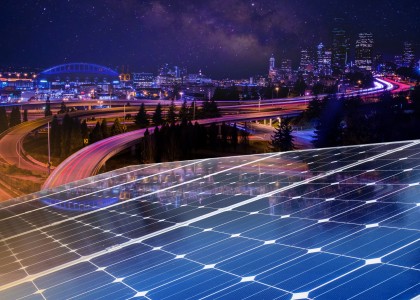Governor Ralph Northam’s new 2018 Virginia Energy Plan (VEP), released earlier this month, rounds out a busy year for clean energy policy in Virginia. It contains policy and program recommendations that will, if thoroughly implemented, deepen energy savings and expand clean energy in the Commonwealth. It proposes that the governor establish a goal to reduce energy consumption in state buildings 20% by 2022, continue robust energy savings performance contracting, and practice more-thorough energy data management. The VEP also proposes a cumulative statewide combined heat and power target and reinforces the value of state and private financing for customer energy efficiency programs. ACEEE is glad the VEP includes several recommendations we put forward in our comments. Now it is time to put them into action.
The VEP and SB 966
While the state government is already a leader on energy efficiency, utilities in Virginia have historically invested minimally in it. In a recent ACEEE ranking of the 51 largest US electric utilities on energy efficiency programs and policies, Dominion Energy Virginia (Dominion)—the largest utility in the Commonwealth—ranked 50th. But soon, that could change. Earlier this year the Virginia General Assembly passed the Grid Transformation and Security Act (SB 966) to require Dominion and Appalachian Power Company (APCo) to ramp up spending on efficiency programs and the State Corporation Commission (SCC) to engage stakeholders in planning. The VEP echoes these requirements. While SB 966 should drive significant utility sector energy savings, it is not a done deal. Utilities will still need to have efficiency programs approved by regulators, who have historically relied on outdated cost-effectiveness testing methods and rejected programs that would almost certainly gain approval in other states.
Here’s how the governor can help:
- Facilitate coordination with the SCC, utilities, and advocates. Governor Northam can provide guidance for the SCC-convened stakeholder collaborative, defining the expected purpose, outcomes, and group methods. Emphasizing a consensus-driven approach and regular meeting schedule can help ensure the process is robust and inclusive.
- Encourage the collaborative to engage a consultant to conduct an energy efficiency study. The SCC can use these results to set annual long-term, cost-effective, and achievable energy savings targets for utilities.
- Fund a full-time energy office employee to engage in utility sector energy efficiency efforts. This staff member can help align state and utility programs, for example, by coordinating state-funded efficiency programs for low-income households with local weatherization programs and utility-delivered programs for these households. The energy office can also offer efficiency programs to fill gaps in utility programming (e.g., programs for industrial customers).
- Support legislation to require strong, long-term energy savings for electric and gas utilities. More than half of states have energy savings goals for utilities, the most effective way to guarantee energy savings. Utilities can also set their own energy savings targets and use pilot programs to test new program models and emerging technologies.
- Support legislation to give utilities financial incentives to invest in energy efficiency. A business model that encourages such investments and aligns with performance toward energy savings goals can help ensure that efficiency programs are sustainable.
- Support alignment of cost-effectiveness tests with Virginia’s policy goals. A balanced, Virginia-specific test would help regulators, utilities, and stakeholders get on the same page in designing and delivering efficiency programs. As a guide, they could use the National Standard Practice Manual, developed by efficiency experts.
- Promote independent oversight of utility-sector evaluation, measurement, and verification (EM&V) and establish a stakeholder EM&V working group. This would improve efficiency program data, bring transparency to EM&V decision making, and help regulators ensure prudent use of ratepayer dollars. Many Virginia stakeholders supported this during a recent public comment process.
Virginia is at a crossroads. The Virginia Energy Plan and SB 966 lay out a path of clean and efficient energy choices, and their implementation will require commitment and involvement from the governor. We look forward to supporting the next steps in the process and are excited for the central role that energy efficiency can play in Virginia’s energy future.



